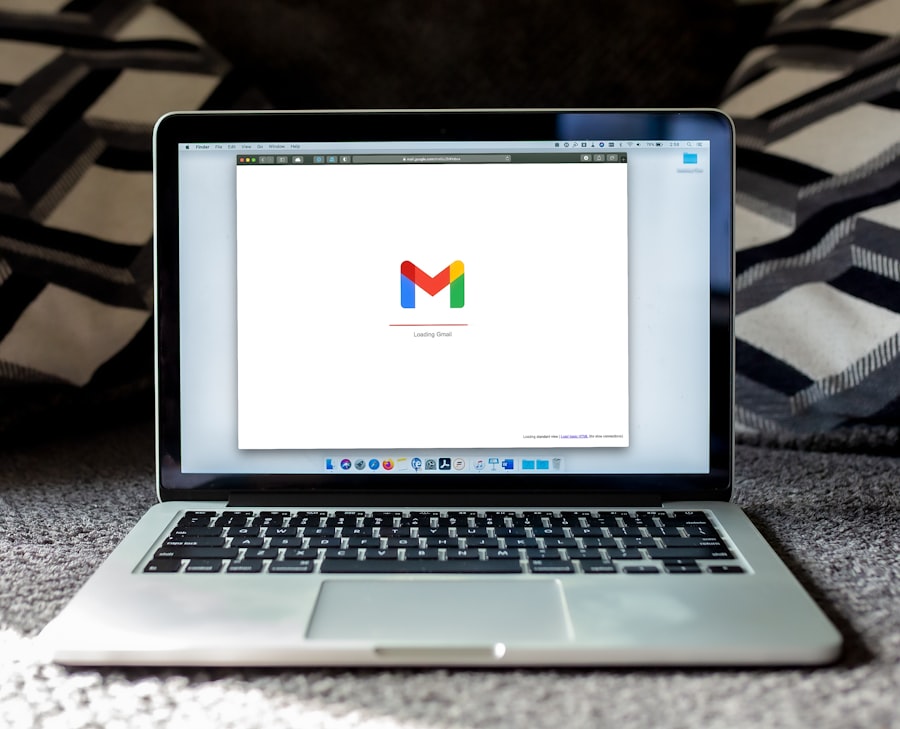
In the ever-evolving landscape of digital marketing, personalization and segmentation have emerged as pivotal strategies that can significantly enhance customer engagement and conversion rates. I have come to realize that personalization goes beyond merely addressing a customer by their first name in an email. It involves curating content, offers, and experiences that resonate with individual preferences and behaviors.
This allows me to tailor my messaging to meet the specific needs of each segment, ultimately fostering a deeper connection with my audience. Segmentation also enables me to identify high-value customers and nurture them through targeted campaigns.
For instance, I can create specialized content for loyal customers who have consistently engaged with my brand, while also developing strategies to re-engage those who have lapsed. This dual approach not only maximizes the effectiveness of my marketing efforts but also ensures that I am providing relevant information to each segment. As I continue to refine my segmentation strategies, I find that the more personalized the experience I offer, the more likely my audience is to respond positively, leading to increased loyalty and higher conversion rates.
Key Takeaways
- Personalization and segmentation are crucial for targeting the right audience and delivering relevant content.
- Interactive content and gamification can increase engagement and provide a more enjoyable user experience.
- Artificial intelligence and machine learning can help analyze data and improve personalization efforts.
- Mobile optimization is essential for reaching users on the go and ensuring a seamless experience across devices.
- Automation and workflow tools can streamline processes and improve efficiency in email marketing campaigns.
- Privacy and data protection should be a top priority when collecting and using customer data.
- Video content in emails can capture attention and convey messages in a more engaging way.
- Integration with social media platforms can help expand reach and connect with audiences across different channels.
Interactive Content and Gamification
As I delve deeper into the realm of digital marketing, I have discovered the immense potential of interactive content and gamification in capturing audience attention. Unlike traditional static content, interactive elements such as quizzes, polls, and surveys invite users to engage actively with the material. I have found that incorporating these elements into my marketing strategy not only enhances user experience but also provides valuable insights into customer preferences and behaviors.
For example, by creating a quiz that helps users determine their ideal product, I can gather data on their interests while simultaneously guiding them toward a purchase.
I have experimented with loyalty programs that reward customers for completing specific actions, such as sharing content on social media or making repeat purchases.
This approach not only incentivizes participation but also fosters a sense of community among my audience. As I continue to explore interactive content and gamification, I am increasingly convinced that these strategies can transform passive consumers into active participants in my brand’s narrative.
Artificial Intelligence and Machine Learning

The integration of artificial intelligence (AI) and machine learning into marketing strategies has revolutionized the way I approach customer engagement. With AI tools at my disposal, I can analyze vast amounts of data to identify patterns and trends that would be impossible to discern manually. This capability allows me to make data-driven decisions that enhance my marketing efforts.
For instance, by utilizing predictive analytics, I can anticipate customer behavior and tailor my campaigns accordingly, ensuring that I reach the right audience with the right message at the right time. Moreover, machine learning algorithms enable me to optimize my marketing campaigns in real-time. As I gather more data on customer interactions, these algorithms learn from past performance and adjust my strategies for maximum effectiveness.
This dynamic approach not only saves me time but also enhances the overall customer experience by delivering personalized content that aligns with individual preferences. As I continue to harness the power of AI and machine learning, I am excited about the possibilities they present for creating more effective and efficient marketing campaigns.
Mobile Optimization
In today’s fast-paced digital world, mobile optimization has become a non-negotiable aspect of any successful marketing strategy. As I observe consumer behavior trends, it is evident that an increasing number of users access content through their mobile devices. This shift has prompted me to prioritize mobile-friendly design in all aspects of my marketing efforts.
From responsive website layouts to mobile-optimized emails, I have learned that ensuring a seamless experience across devices is crucial for retaining audience attention. Additionally, mobile optimization extends beyond mere aesthetics; it encompasses functionality as well. I have invested time in understanding how users interact with mobile content and have made adjustments accordingly.
For instance, I have streamlined navigation menus and reduced loading times to enhance user experience on mobile devices. By prioritizing mobile optimization, I not only cater to the preferences of my audience but also improve my search engine rankings, as search engines increasingly favor mobile-friendly sites. As I continue to adapt to this mobile-centric landscape, I am committed to providing an exceptional experience for users on all devices.
Automation and Workflow
The advent of automation in marketing has been a game-changer for me in terms of efficiency and effectiveness. By automating repetitive tasks such as email campaigns and social media posting, I can focus more on strategic planning and creative development. Automation tools allow me to schedule content in advance, ensuring that my messaging remains consistent across platforms while freeing up valuable time for other initiatives.
This streamlined workflow has not only improved my productivity but has also enabled me to maintain a steady presence in the digital space. Moreover, automation facilitates personalized communication at scale. With tools that segment my audience based on behavior and preferences, I can send targeted messages without sacrificing the personal touch.
For example, automated email sequences allow me to nurture leads through tailored content based on their interactions with my brand. As I continue to embrace automation in my marketing efforts, I am increasingly aware of its potential to enhance customer relationships while optimizing my workflow.
Privacy and Data Protection

As I navigate the complexities of digital marketing, the importance of privacy and data protection has become increasingly apparent. With growing concerns about data breaches and misuse of personal information, I recognize that building trust with my audience is paramount. To achieve this, I have made it a priority to implement robust data protection measures and transparent privacy policies.
By clearly communicating how I collect, use, and protect customer data, I aim to foster a sense of security among my audience. Additionally, compliance with regulations such as GDPR and CCPA is essential in today’s marketing landscape. I have taken proactive steps to ensure that my practices align with these regulations by obtaining explicit consent from users before collecting their data.
This commitment not only safeguards customer information but also positions my brand as a responsible entity in the eyes of consumers. As I continue to prioritize privacy and data protection in my marketing strategies, I am confident that this approach will strengthen customer loyalty and enhance my brand’s reputation.
Video Content in Emails
Incorporating video content into email marketing has proven to be a highly effective strategy for capturing attention and driving engagement. As I experiment with different formats, I’ve found that videos can convey messages more dynamically than text alone. Whether it’s a product demonstration or a behind-the-scenes look at my brand, video content adds a layer of authenticity that resonates with my audience.
By embedding videos directly into emails or linking to video content on landing pages, I can create a more immersive experience for recipients. Moreover, video content tends to increase click-through rates significantly compared to traditional email formats. I’ve noticed that when I include engaging video thumbnails in my emails, recipients are more likely to take action—whether that’s clicking through to learn more or making a purchase.
As I continue to explore the potential of video in email marketing, I’m excited about the opportunities it presents for storytelling and brand connection. By leveraging this medium effectively, I’m able to create memorable experiences that leave a lasting impression on my audience.
Integration with Social Media Platforms
The integration of social media platforms into my marketing strategy has become essential for reaching a broader audience and fostering engagement. As I navigate various social media channels, I’ve learned that each platform offers unique opportunities for connecting with different segments of my audience. By tailoring my content to suit the specific characteristics of each platform—whether it’s visually-driven posts on Instagram or informative articles on LinkedIn—I can maximize my reach and impact.
Furthermore, social media serves as a powerful tool for driving traffic back to my website or landing pages. By strategically placing links within my posts or utilizing call-to-action buttons, I’ve been able to guide users seamlessly from social media interactions to meaningful conversions on my site. Additionally, engaging with followers through comments and direct messages allows me to build relationships and foster community around my brand.
As I continue to integrate social media into my overall marketing strategy, I’m excited about the potential for increased visibility and deeper connections with my audience. In conclusion, as I reflect on the various facets of modern digital marketing—from personalization and segmentation to social media integration—it’s clear that adaptability is key in this dynamic landscape. By embracing innovative strategies such as interactive content, AI-driven insights, and mobile optimization, I’m better equipped to meet the evolving needs of my audience while driving meaningful results for my brand.
Each element plays a crucial role in creating a cohesive marketing strategy that resonates with consumers in an increasingly competitive environment.
FAQs
What are the top email marketing trends to watch this year?
Some of the top email marketing trends to watch this year include personalization, interactive content, mobile optimization, and automation.
Why is personalization important in email marketing?
Personalization is important in email marketing because it helps to create a more tailored and relevant experience for the recipient, leading to higher engagement and conversion rates.
What is interactive content in email marketing?
Interactive content in email marketing refers to elements such as quizzes, polls, and surveys that allow recipients to actively engage with the email, leading to increased interaction and response rates.
How can mobile optimization impact email marketing?
Mobile optimization is crucial in email marketing as a large percentage of email opens occur on mobile devices. Ensuring that emails are optimized for mobile viewing can improve the overall user experience and engagement.
What role does automation play in email marketing?
Automation in email marketing allows for the creation of personalized and timely email campaigns based on user behavior and preferences, leading to more targeted and effective communication with subscribers.






No Comments